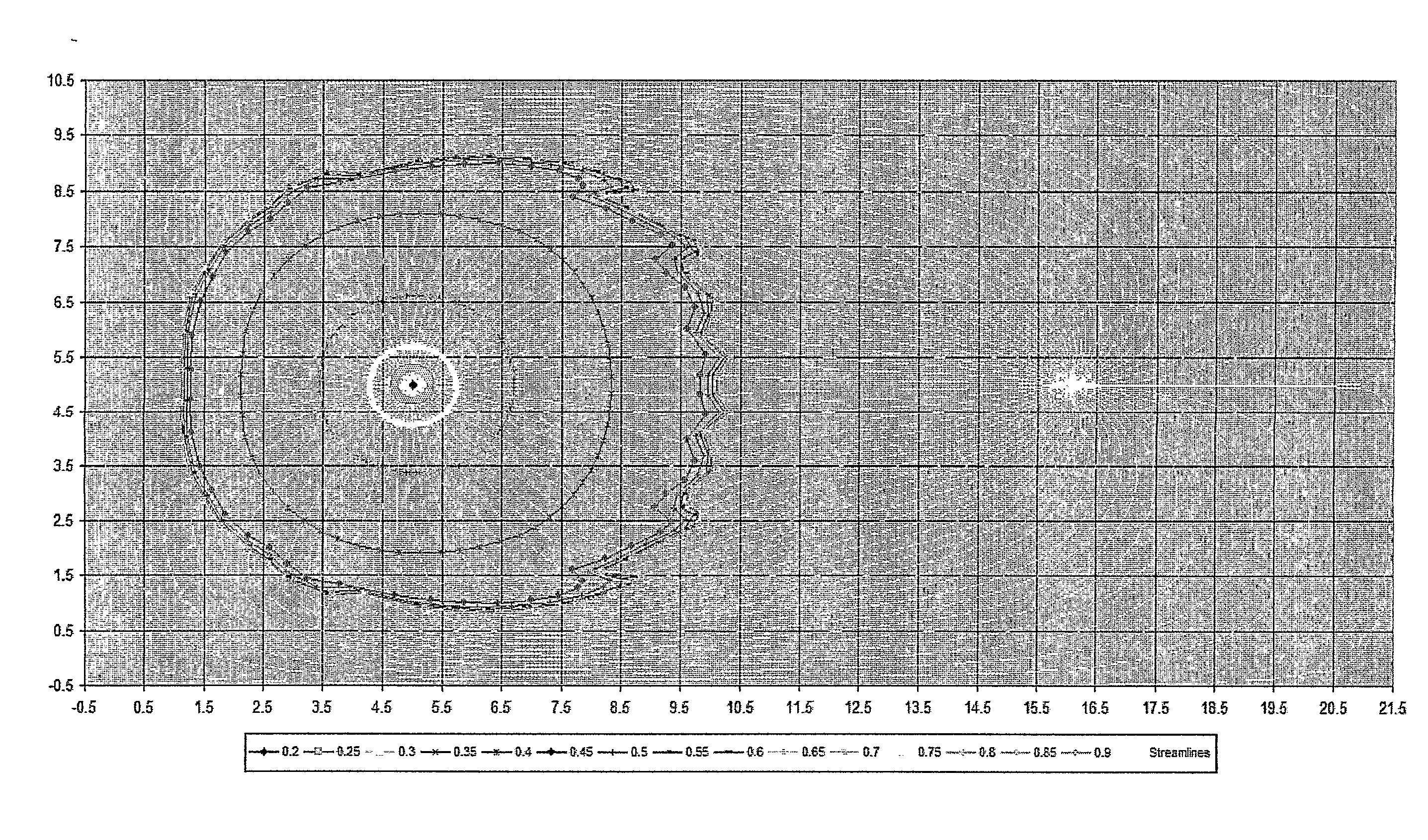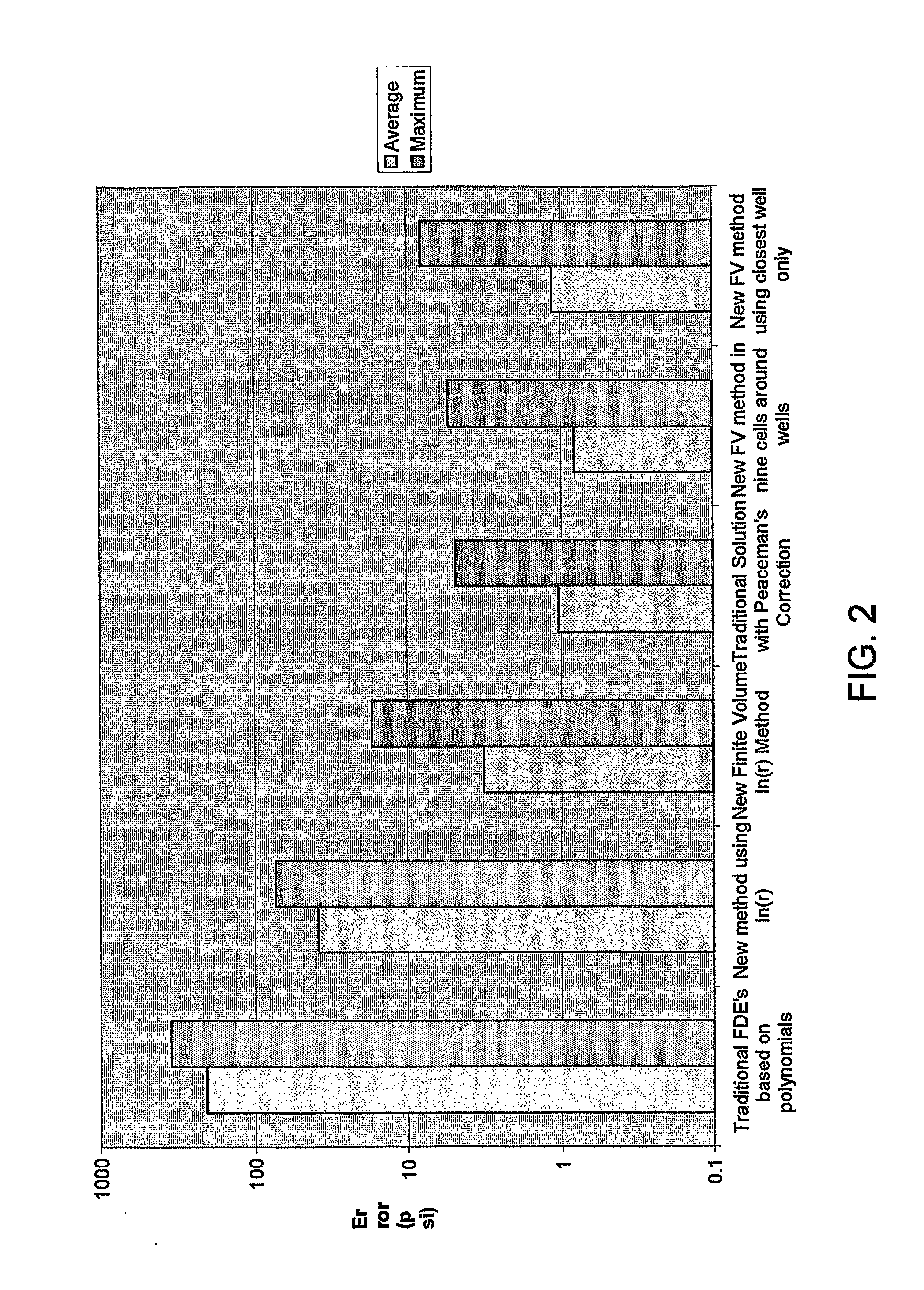Reservoir Simulation
a technology of reservoir simulation and simulation model, which is applied in the field of reserve simulation, can solve the problems of insufficient or insufficient well equations, inability to know which if any of the well equations is adequate, and insufficient computer speed or big enough to meet the ever-escalating needs of reservoir simulation, so as to improve the prediction of reservoir saturation, improve the prediction of reservoir pressure, and improve the effect of reservoir saturation
- Summary
- Abstract
- Description
- Claims
- Application Information
AI Technical Summary
Benefits of technology
Problems solved by technology
Method used
Image
Examples
Embodiment Construction
Section I. Method of Formulating Finite Difference Equations
[0094]An aspect of the present invention involves the use of finite difference equations that incorporate the singularities in pressure at the wells. The Weber finite difference equations accurately represent the actual pressures at the wellbore and elsewhere in the well cells. No well equations are required. The Weber method hypothesizes that traditional finite difference equations are unable to predict wellbore pressures because they are based on Taylor series, which are polynomial in form. Polynomials are continuous functions and are unable to represent singularities. Instead of polynomials, finite difference equations are derived on 1) ln(r)-functions and 2) 1 / r functions, both of which are singular as r approaches zero.
[0095]Finite Difference Equations Based on Logarithmic Functions
[0096]In an infinite, homogeneous reservoir with steady-state flow, the flow velocity, q, from an infinite straight line source in the rese...
PUM
| Property | Measurement | Unit |
|---|---|---|
| pressures | aaaaa | aaaaa |
| permeability | aaaaa | aaaaa |
| porosity | aaaaa | aaaaa |
Abstract
Description
Claims
Application Information
 Login to View More
Login to View More - R&D
- Intellectual Property
- Life Sciences
- Materials
- Tech Scout
- Unparalleled Data Quality
- Higher Quality Content
- 60% Fewer Hallucinations
Browse by: Latest US Patents, China's latest patents, Technical Efficacy Thesaurus, Application Domain, Technology Topic, Popular Technical Reports.
© 2025 PatSnap. All rights reserved.Legal|Privacy policy|Modern Slavery Act Transparency Statement|Sitemap|About US| Contact US: help@patsnap.com



